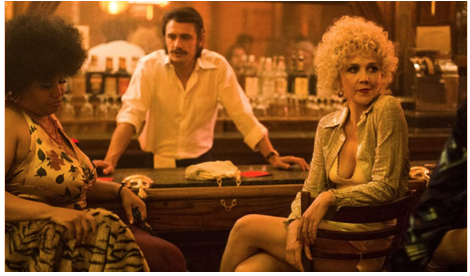CommentsWELFARE AS WE KNEW IT-“The Deuce” is HBO’s recently launched and highly publicized series on New York in the 1970s and the rise of the porn industry in the Times Square (42nd Street) area. The series is populated by an underclass of drug addicts, pimps, prostitutes and mob enforcers.
During this same period, there was another underclass in New York, larger and more pervasive: the underclass associated with the rapidly expanding welfare rolls. The story of welfare and its expanding role is less cinematic than the underclass culture in “The Deuce.” But it is an important public policy story, with overlaps to “The Deuce” story. Further, it continues to have relevance for today’s policy debates, not only on welfare but also more broadly on the elements of successful public policy. It’s worth briefly recounting.
The welfare rolls exploded in size in New York City between the mid-1960s and the first years of the 1970s. In September 1966, 439,394 persons in New York City were receiving Aid to Families with Dependent Children (AFDC), the main welfare benefit program. By September 1970, around the time “The Deuce” chronicles, the number of AFDC recipients had soared to 836,236. It then continued to rise, reaching 913,987 persons in September 1972. Put another way, the number of persons receiving AFDC in New York City in the early 1970s was greater than the populations of most American cities.
This growth wasn’t accidental, or due to an economic recession. In fact, the New York City economy was booming, as it would not do again until the 1990s. A main culprit was New York Mayor John Lindsay and his policy advisors, especially Human Resources Administrator, Mitchell Ginsberg, a former dean of Social Work at Columbia University. Lindsay, Ginsberg and others regarded the work requirements connected to welfare as “cruel” and “lacking compassion,” and even came to describe welfare as a form of economic development for New York City, as it brought federal funds into the city.
E.S. Savas, Baruch College professor, was an enthusiastic young staff member in the Lindsay administration and has recounted the conscious push in New York City to expand the welfare rolls. As Savas recalls, community development groups and anti-poverty activists “fanned out to encourage individuals to sign up for welfare. A simple one-page self-declaration of need sufficed as an application. Eligibility checking was perfunctory and occurred much later, if at all.” A welfare rights movement arose, also connected to Columbia University, that portrayed welfare as a “right,” not connected to any work requirements or obligations.
Over the years, Savas came to reject the Lindsay/Ginsberg worldview on welfare, seeing it as hurting the same poor people it claimed to help. “It took almost thirty years for the full scale of the human disaster to be recognized in New York and elsewhere,” Savas would write in a 2005 book. “Broken families, single parent families and ‘intergenerational welfare dependency’ grew as teenage pregnancy and illegitimate births mushroomed.”
Ken Auletta, the New York prominent writer and essayist, set out in 1979 to study the growing welfare population. He spent seven months attending a work readiness program for welfare recipients and other low-income New Yorkers, operated by MDRC, the highly regarded social research center. His 1982 book,The Underclass, helped popularize the term “underclass,” as he described what he saw as a new class of poor people, entrenched in antisocial behaviors. Auletta saw the underclass as “the most momentous story in America” at the time, describing it as “a firebell in the night.”
Up through the early 1980s, then, the welfare story in New York was largely one of failure: a growing disconnection of a large segment of New Yorkers from the mainstream economy, excuses and rationalizations from government officials, and bizarre notions of “compassion.” But the story does not end there.
(Michael Bernick writes about emerging employment structures, policy and law. He is an occasional CityWatch contributor. This piece also appeared in Forbes.) Prepped for CityWatch by Linda Abrams.
-cw
















